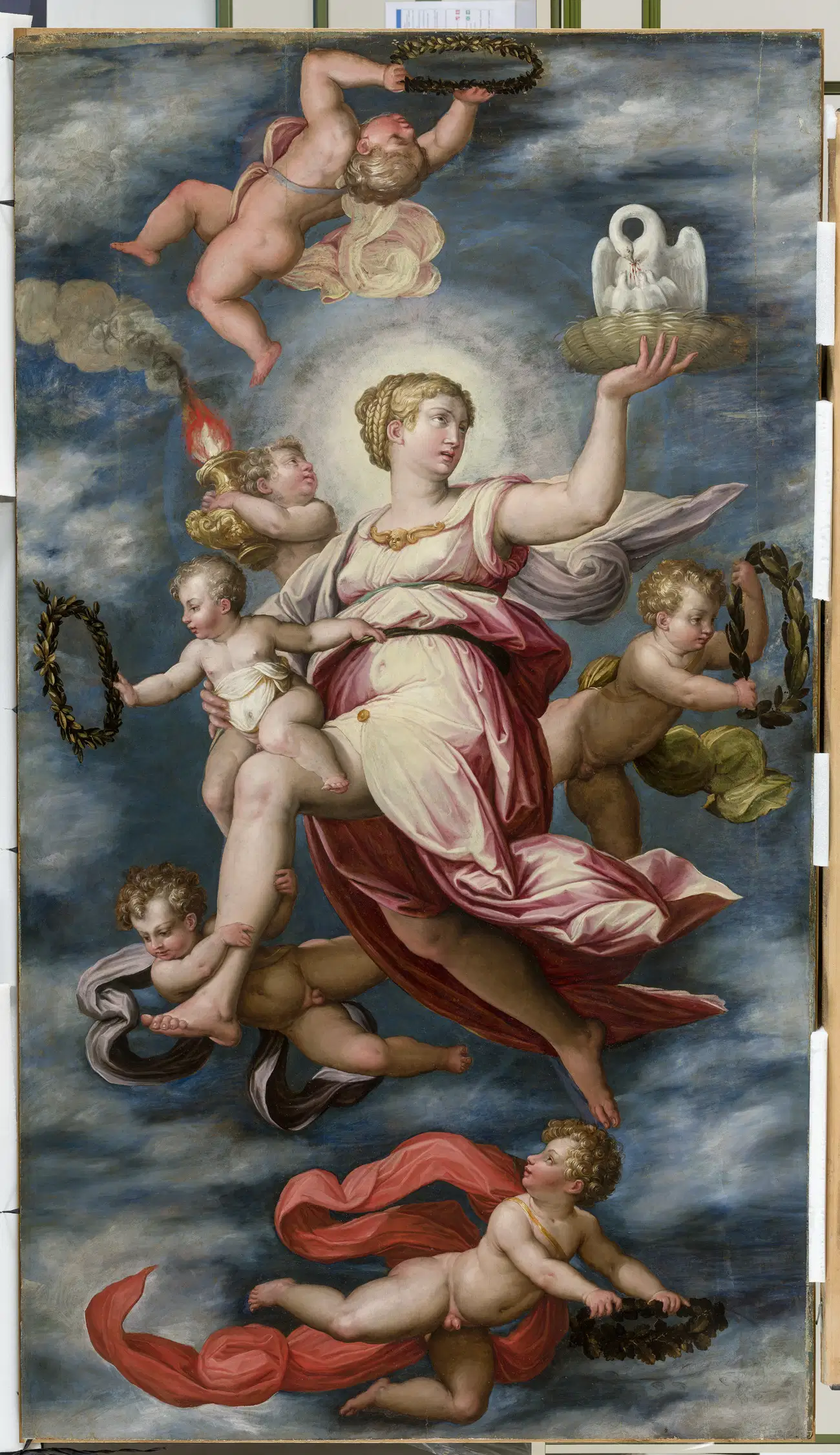After decades of work, the painted ceiling of a Venetian palace created by painter and biographer Giorgio Vasari has been completely reconstructed and restored.
The Palazzo Corner Spinelli is a palace on the Grand Canal in Venice. It is incredibly significant for art historians as it is one of the city’s most prominent works of transitional architecture. It shows the fifteenth- and sixteenth-century Venetian elite moving away from the Gothic style and more towards Renaissance designs. However, it is also important for the arts because its occupants, the wealthy Corner family (or Cornaro in standard Italian), were patrons of Italian artists such as Tintoretto and Gian Lorenzo Bernini. In 1542, Giorgio Vasari completed a series of panels of allegorical figures for the ceiling of the palace’s grand room. However, the Corner and, later, the Spinelli families completely sold off and dispersed the paintings by the end of the eighteenth century. Starting in 1987, the Italian government began helping museums in Venice purchase the Vasari panels to reunite them once more. And now, thanks to a collaboration between the Italian Culture Ministry, the Gallerie dell’Accademia, and several other museums, charities, and nonprofits, the paintings have been restored and reassembled in the Gallerie dell’Accademia’s Palladio Wing.
There were originally nine panels showing five main allegorical figures representing the virtues of charity, faith, hope, justice, and patience. The other four panels contain putti, or naked male cherubs, one of which remains missing. The government and many cultural organizations have gone to great lengths to locate and retrieve the Vasari paintings. The Faith panel was purchased from a private collection in 2013 for the project. Even though the Culture Ministry provided most of the funds, small cultural charities like the Venice in Peril Fund contributed thousands of euros towards its purchase. Ironically, the Hope painting was the last to be tracked down and purchased in April 2017 from a British private collection. Other organizations that provided funding and aid in the project include the Venetian Museum Center, the Fondazione di Venezia, Venetian Heritage Inc., Vela S.p.A., MSC Cruises, SAVE S.p.A, the New Venice Consortium, and the Veneto Banca Foundation. Cultural Minister Gennaro Sangiuliano commented, “The important research and fundraising campaign that allowed the reacquisition of the work is further confirmation of how necessary and fruitful the relationship between public and private is in the protection and valorization of Italian cultural heritage.”
The research done to reassemble nearly the entire work resulted in one painting being identified as part of the Palazzo Corner Spinelli panels. Researchers made this discovery after years of the painting sitting in the Casa Vasari Museum in Arezzo. The Suicide of Judas was previously believed to be a painting made separate from the allegorical figures. However, research has shown that someone cut it from the Hope panel. It indicates that other sections, still missing, may show cautionary tales or what the Italian arts newspaper Finestre sull’Arte calls an “interpretative key of the iconology of the individual sections, attributing new meaning to the unity of the composition.”
The Gallerie dell’Accademia unveiled the reassembled work to the public this past Wednesday, August 28th.

